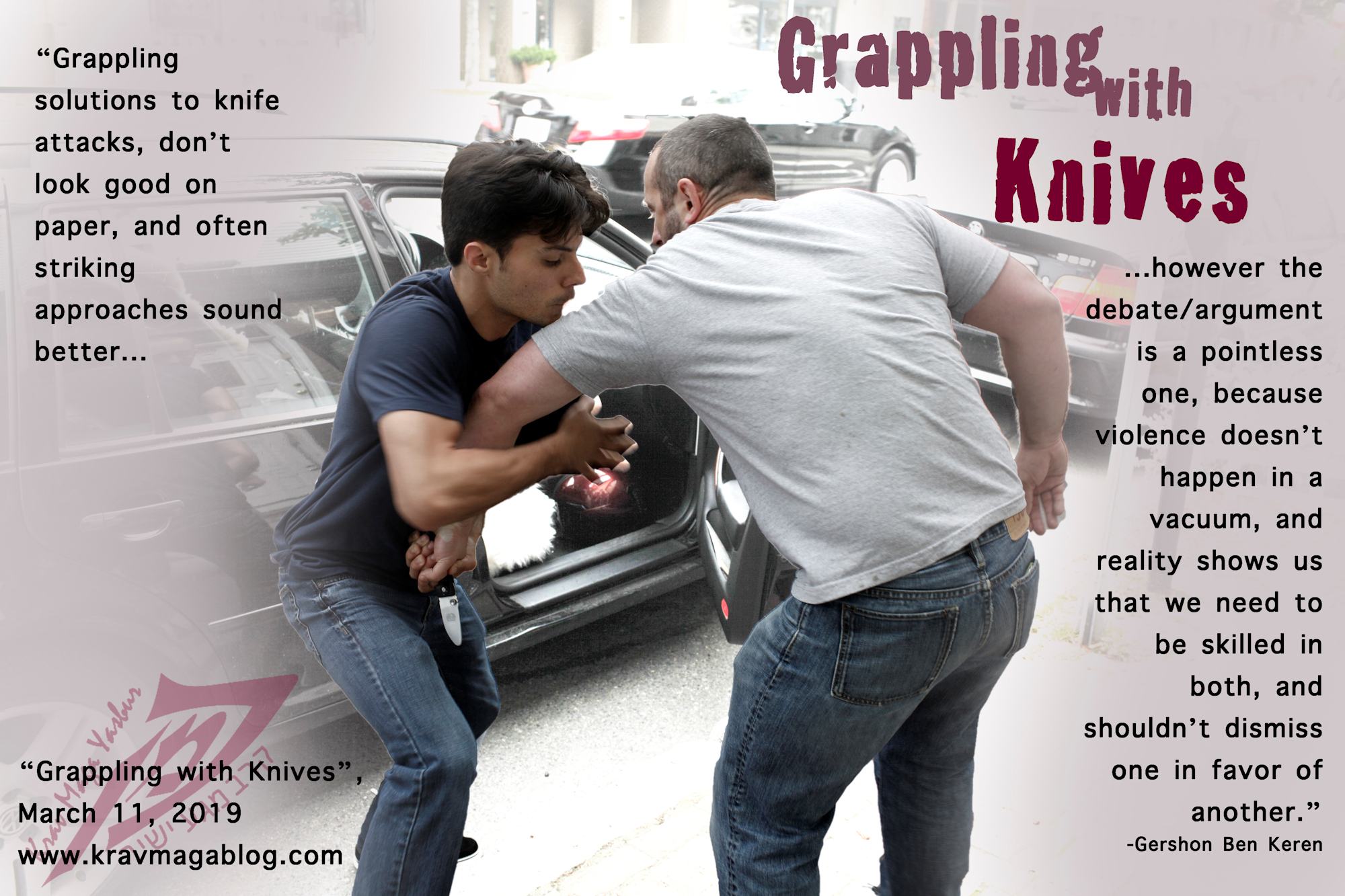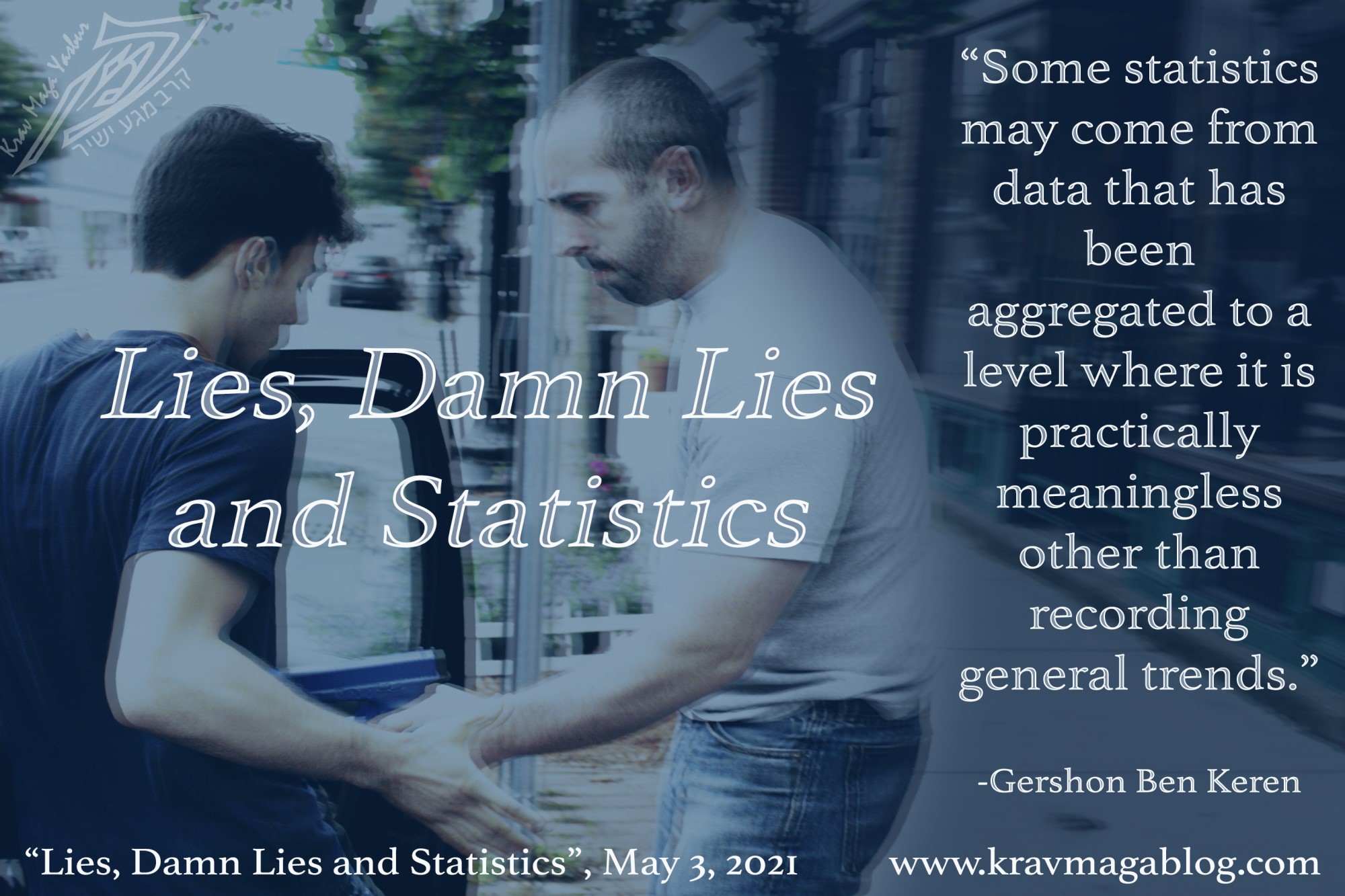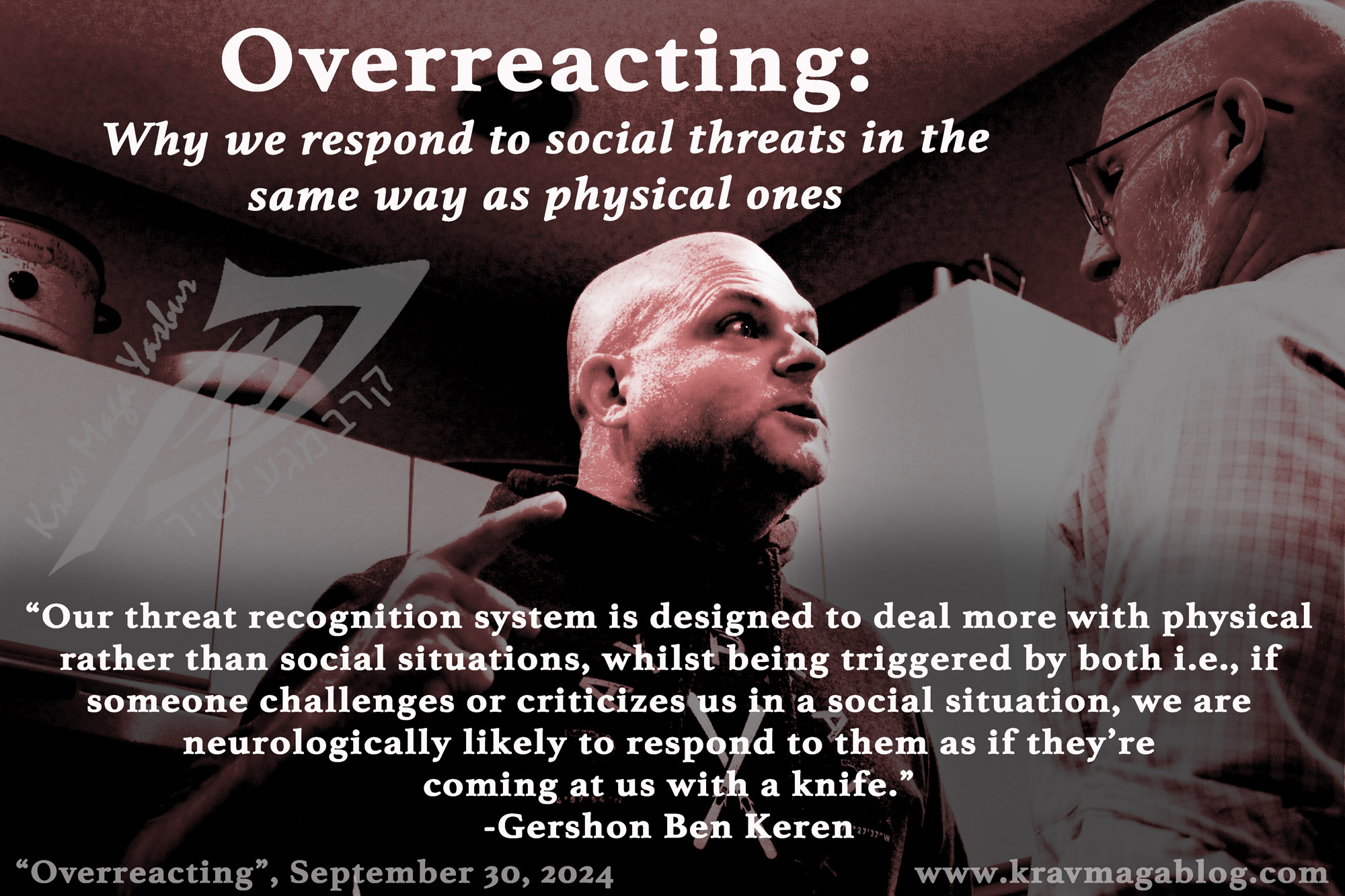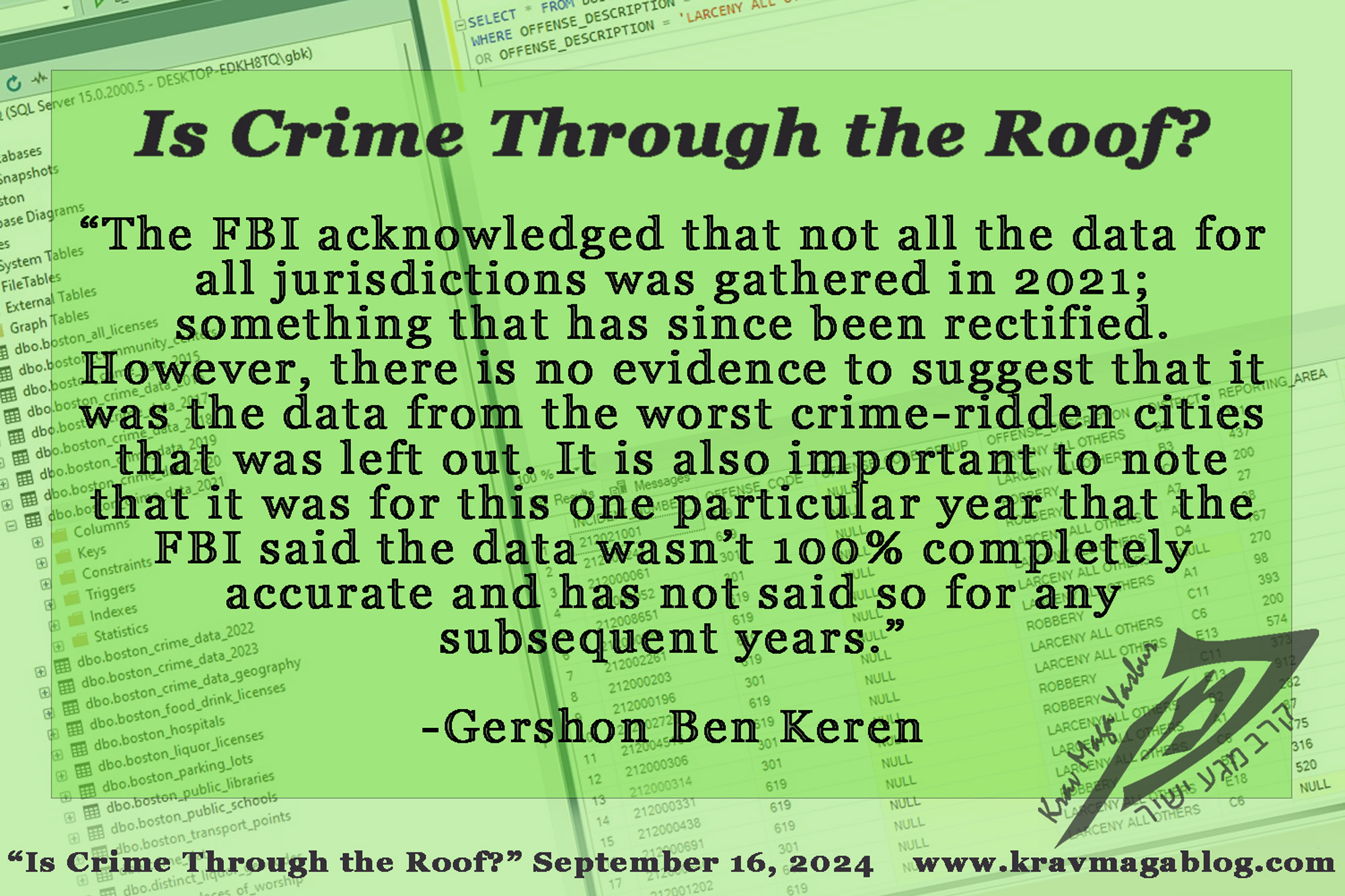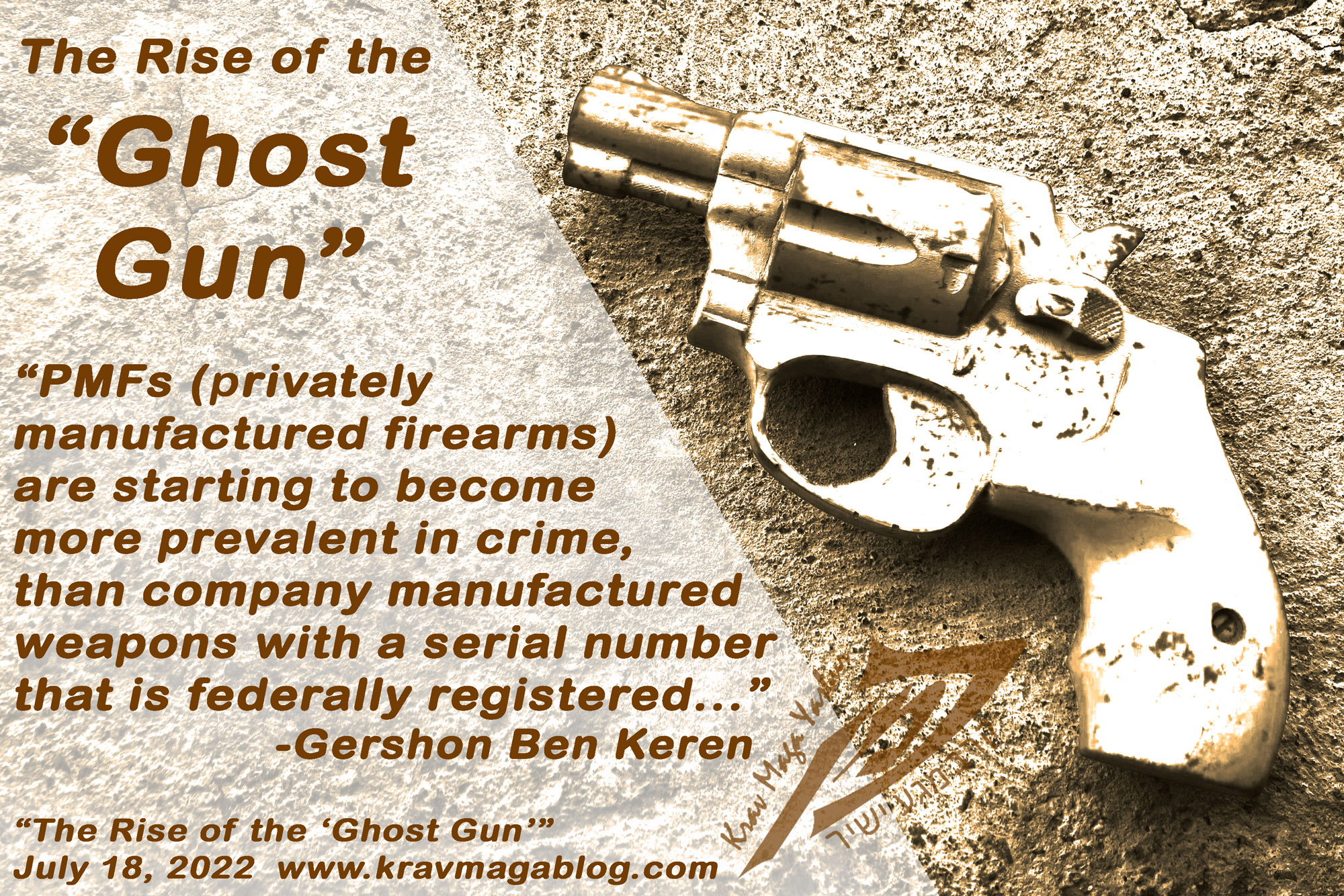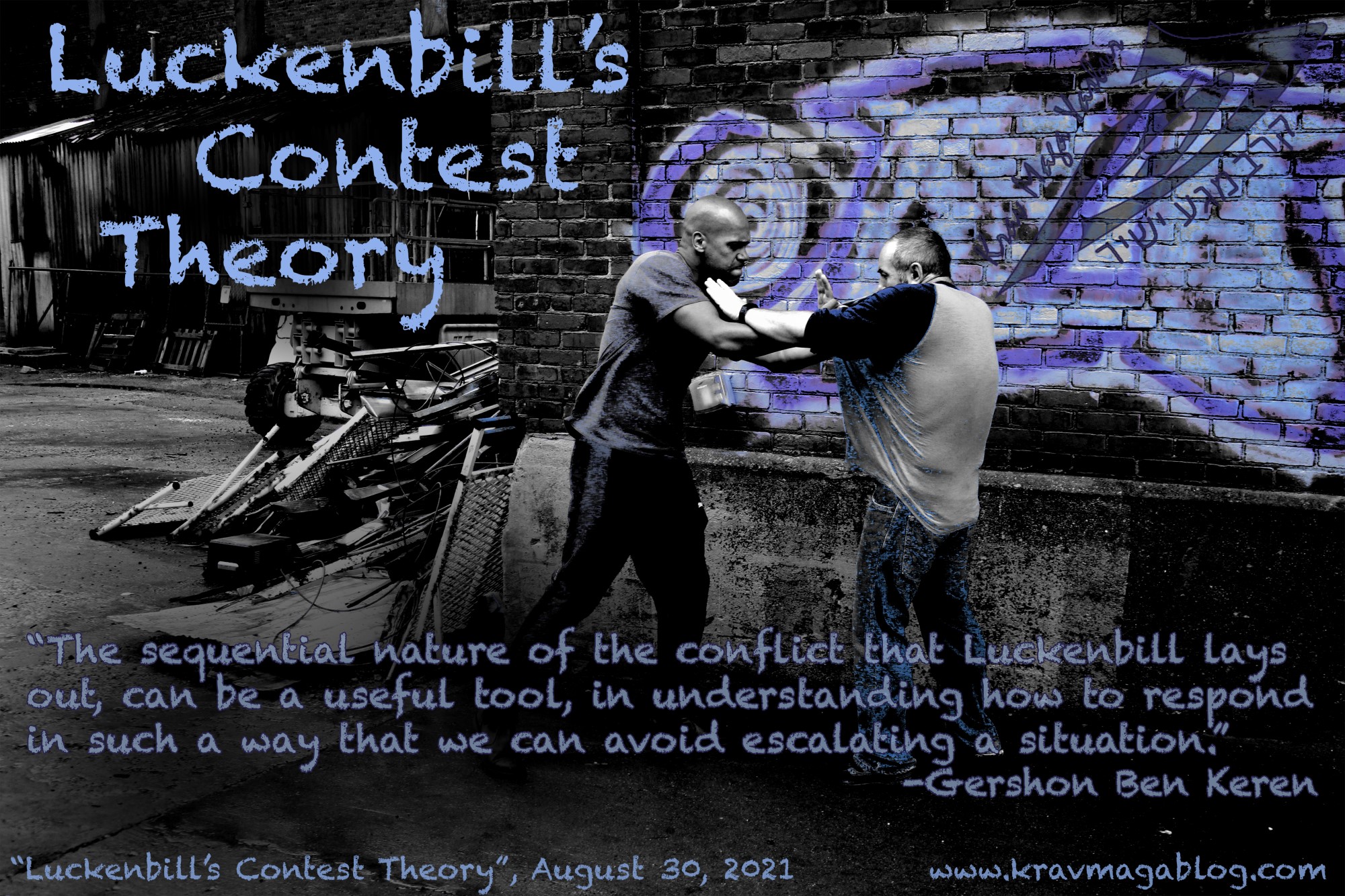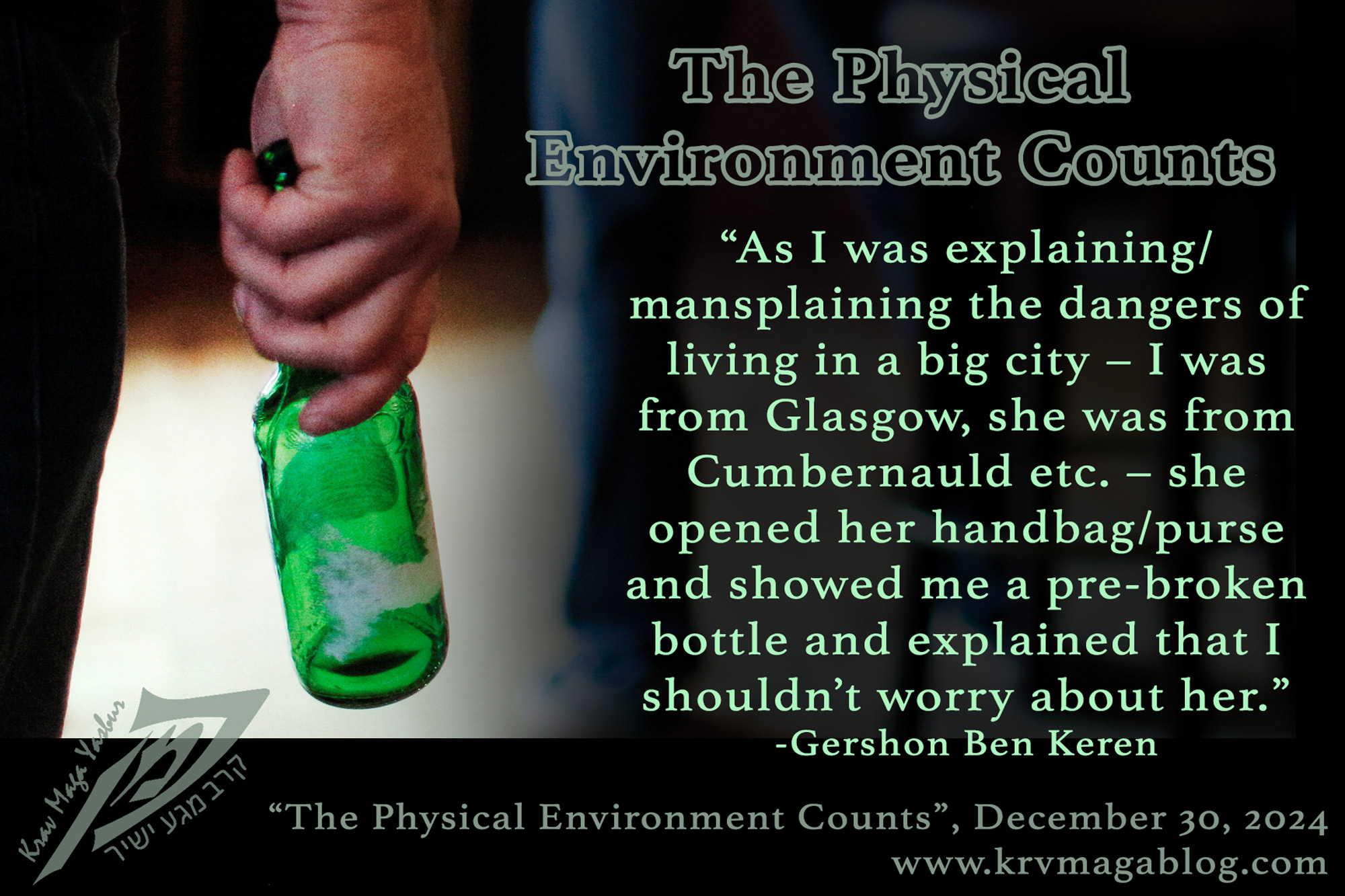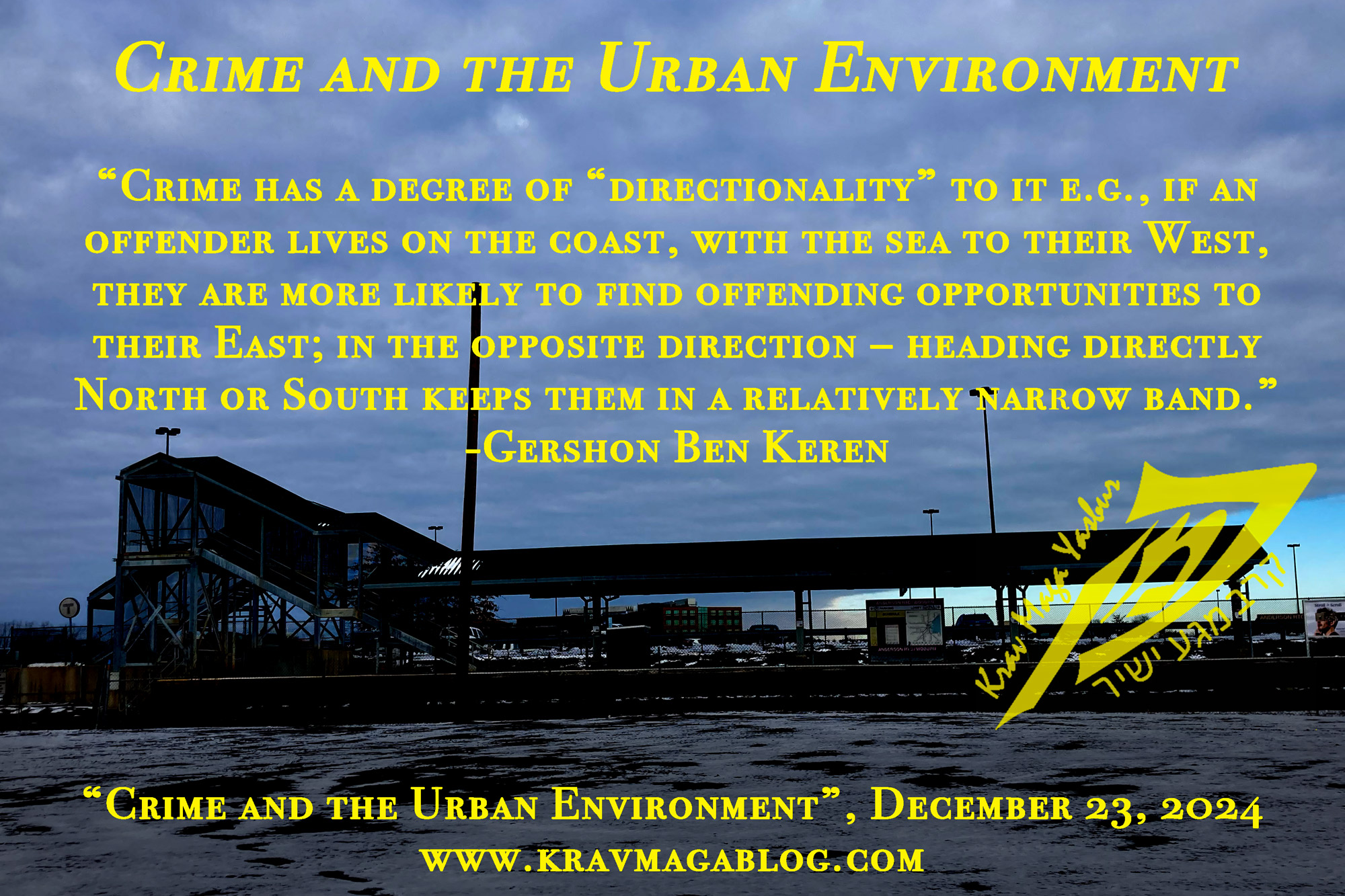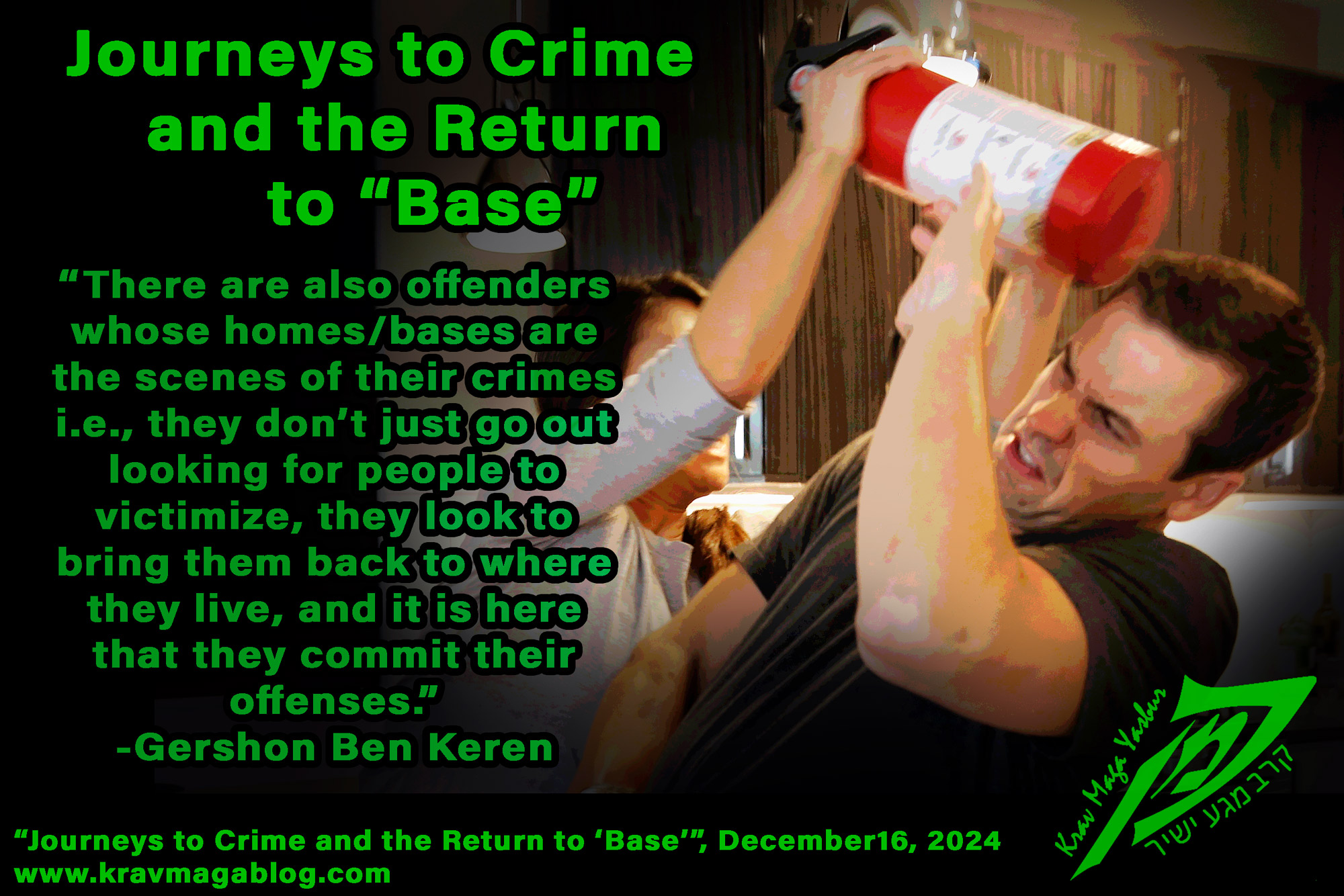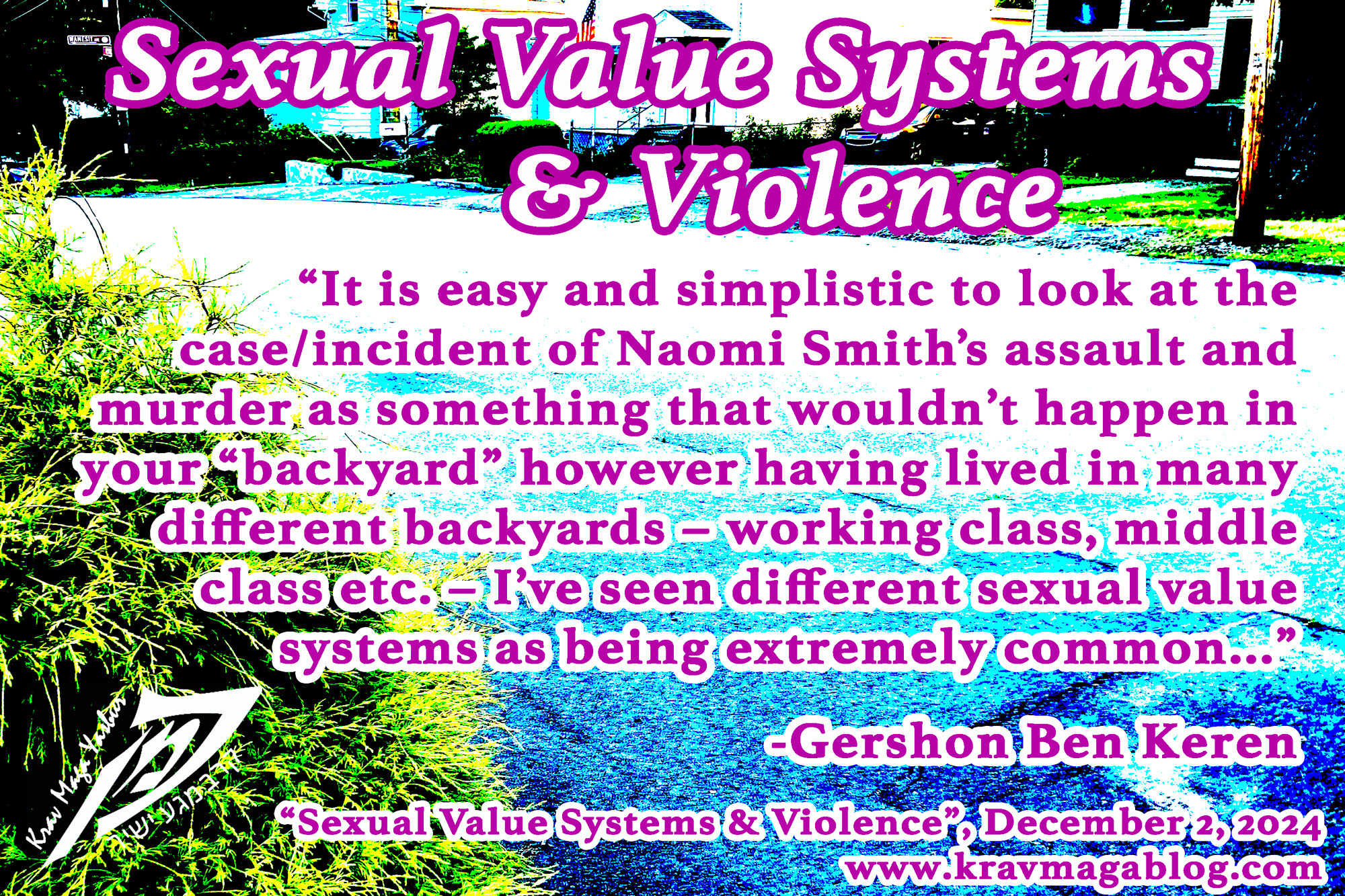Luckenbills Contest Theory, is an article written by Gershon Ben Keren, a 5th Degree Black Belt in Krav Maga, who teaches Krav Maga in Boston, MA. He has also authored three Amazon best-Selling Books on Krav Maga.
In the last five articles I went through a common process that predatory individuals engage in when looking to victimize strangers i.e., search, selection (victim), surveillance, synchronization and strike. In this article I want to take a closer look at social/spontaneous violence, where individuals are externally rather than internally motivated. In a crime such as street robbery, an offender exploits the opportunities that are presented to them however their crime is internally motivated and has a goal i.e., to acquire assets from those they victimize. In spontaneous incidents, the aggressor(s) is externally motivated by events, which have happened to them e.g., somebody has knocked into them and spilt a drink over them etc. Luckenbill (1977), in his “Character Contest Theory” contends that for such incidents to result in violence, the confrontation over said event, must move through five phases. In response to an incident, where somebody (person A), is responding to an injustice – either real or perceived – that has been committed against them, such as having a drink spilt over them (by Person B), these would be:
- Person A (the aggrieved party), would decide to respond in a way that would threaten Person B’s self-respect/identity/honor etc. setting up a “Character Contest”
- Person B must decide to take offense at this and feel that they have been insulted in some way e.g., they apologized for bumping into Person A, however Person A is not accepting the apology, and is shouting insults at them.
- Person B now decides to respond to Person A, either verbally (throwing insults back), or physically.
- Person A and B now “agree” to settle the contest physically i.e., neither party is looking for a non-violent solution.
- In stage five, one or other party (or simultaneously), makes a physical attack
Whilst Luckenbill’s Contest Theory has some strengths i.e., it recognizes the interdependent nature of social violence (that everyone plays a part in some way), as Lonnie Athens points out, it wrongly assumes that both parties are consenting to use violence, whereas in reality most social violence is non-consensual, with one person(s) assaulting someone who wants to avoid the use of violence. However, the sequential nature of the conflict that Luckenbill lays out, can be a useful tool, in understanding how to respond in such a way that we can avoid escalating a situation.
To do this, it is worth expanding the idea of what a “Character Conflict” is, as “Character” is a very ambiguous term. An individual who has had a drink spilt over them isn’t really concerned with the “Character” of the other person, they are more concerned with righting a wrong, and somehow undoing an injustice that they’ve experienced. The person’s character may motivate them somewhat e.g., if they believe the person deliberately spilt a drink over them, they may have a greater motivation to use violence etc., however the “contest” is more about demonstrating to themselves, and those around them, that they are higher in the social pecking order than the other person. The contest is more about “Status” – and regaining it – than about “Character”. If we can keep the idea of “Social Status”, at the heart of our solutions, then we are more likely to be able to avoid the contest becoming a physical confrontation. Unfortunately, many people fail to recognize this, and confuse/muddle up, conflict resolution methodologies with de-escalation methods e.g., searching for common ground on which to build a resolution, rather than recognizing that until status is restored/recognized the other party is not looking to amicably resolve the issue. The first task in dealing with social/spontaneous violence, is to de-escalate and remove the emotion around the loss of status. This is why it is imperative to let the other party drive the solution, rather than informing them of a solution, such as offering to buy them another drink etc.
Luckenbill’s model, has a strength in that it recognizes that our response plays some part in escalating the incident (the interdependent nature of violence). If we respond to a person - who has become angry and aggressive due to something external, which has happened to them, and which they hold us responsible for (such as cutting in front of them in a line/queue) - by taking offense at the things they say or do, we are contributing to the conflict. Being effective rather than right is key to avoiding this. Take a situation, where you are walking past a line of parked motorcycles, and as you do so one falls over. The owner who is in a shop, sees this and starts shouting at you, saying that you knocked their bike over etc. This isn’t the case, however if you try and argue this, at this moment, they are not in an emotional space to deal with that information/argument. All they will see is you challenging their status, by telling them that they are wrong. A physical confrontation may be avoided by refocusing their attention away from a dispute over status, and onto the issue e.g., “It’s a really nice-looking bike, let’s get it up and see if there is any damage.” There is no admission of guilt here, which there would be if you apologized, but it effectively gives the other person the time to metaphorically count to ten, before you engage further with the de-escalation process. By not engaging in phases two and three of the model i.e., deciding to take offense at the other person’s word/action, and then responding in a challenging way, you are not engaging in the escalation of the conflict.
No single model can explain all violence e.g., if you are dealing with someone who has a certain personality disorder – such as psychopathy – the way that such an individual may respond to social conflict, will probably fall outside of the bounds of the model/theory etc. However, it is worth looking at what is specific, and what is universal, in models of violence, so that we can gain a better understand how the dynamic interactions in conflicts can either escalate or de-escalate a situation.
0 COMMENTS